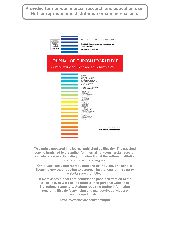摘要
The resolution of free DL-amino acids in human nail was carried out by combination of the R(-)-4-(3-isothiocyanatopyrrolidin-1-yl)-7-(N,N-dimethylaminosulfonyl)-2,1,3-benzoxadiazole [R(-)-DBD-PyNCS] derivatives and UPLC-ESI-TOF-MS. The reaction of the reagent with amino acids effectively proceeds at 55 degrees C for 20 min in the presence of 1% triethylamine (TEA) to produce the corresponding diastereomers. Each pair of the resulting derivatives was efficiently separated by a gradient program (a mixture of H(2)O and CH(3)CN containing 0.1% formic acid (HCOOH) or 5 mM CH(3)COONH(4) and CH(3)CN) using a reversed-phase ACQUITY UPLC (TM) BEH C(18) (1.7 mu m, 100 mm x 2.1 mm i.d.) column and sensitively detected by TOF-MS. The detection limits (S/N = 3) of the TOF-MS were 1.0-750 fmol, respectively. A good linearity was achieved from the calibration curves, which was obtained by plotting the peak area ratios of the analytes relative to the internal standard (IS), i.e., 6-aminohexanoic acid, versus the injected amounts of each amino acid (r(2) > 0.996), and the intra-day and inter-day assay precisions were less than 8.93%. The derivatives of the free m-amino acids in human nail were successfully identified by the proposed procedure. As we know, for the first time, these five kinds of D-amino acids, which were D-Ala, D-Val, D-Pro, D-Ile and D-Leu, were found from human nail samples. Fifteen kinds of L-amino acids were also recognized from human nails. Using these methods, the amounts of DL-amino acids in the nails of healthy volunteers and diabetic patients were determined. When comparing the index from diabetic patients to those from healthy volunteers, there is no significant difference in the content of the L-amino acids in the nails. However, a statistically significant (P < 0.01) correlation was observed between the D/L-amino acid concentration ratios (Ala, Val, Ile, Leu). Therefore, because the proposed method provides a good mass accuracy and the trace detection of the DL-amino acids in human nails, this analytical technique could be a noninvasive technique to assist in the diagnosis and assessment of disease activity in diabetic patients.
- 出版日期2011-11-1
